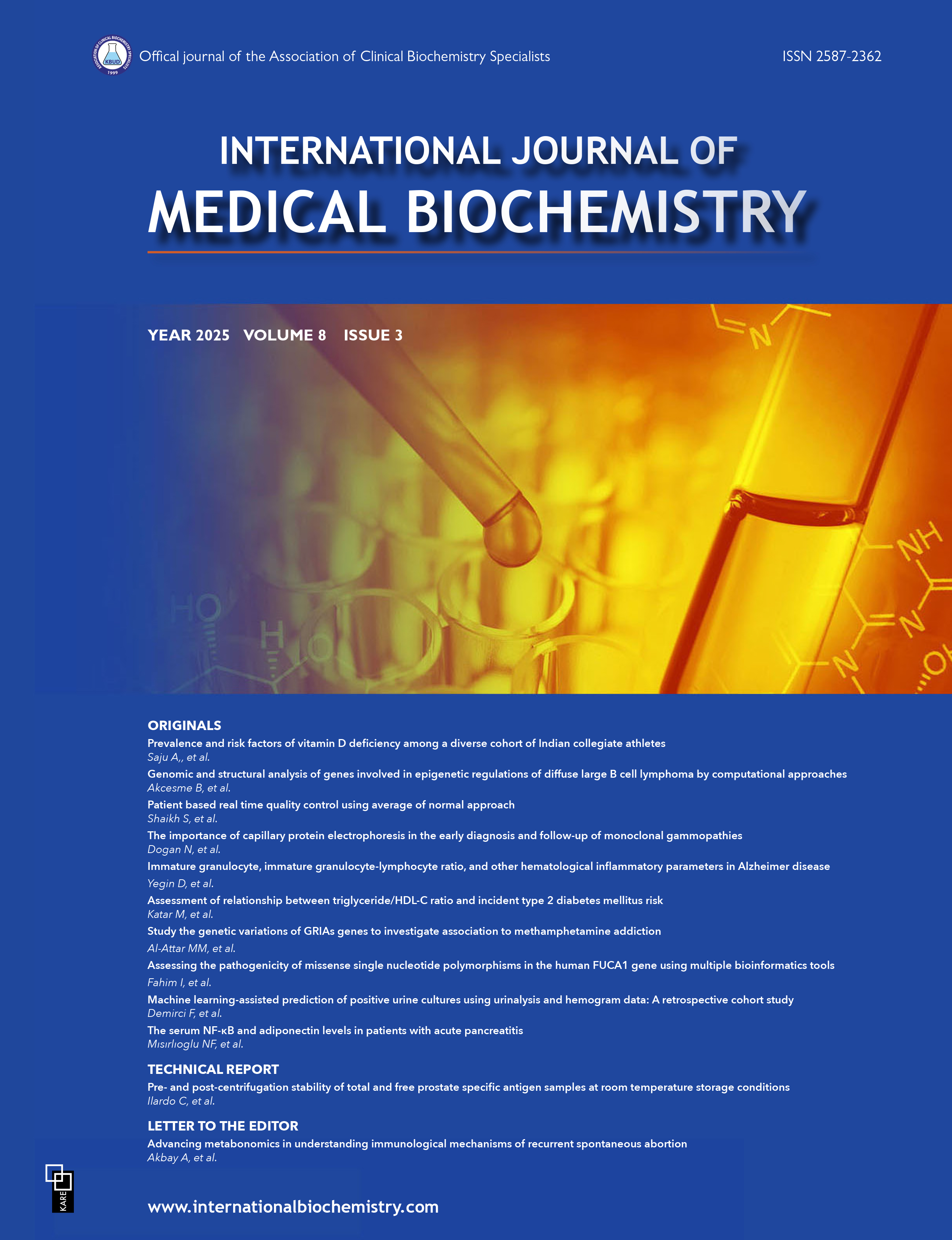Assessment of relationship between triglyceride/HDL-C ratio and incident type 2 diabetes mellitus risk
Muzaffer Katar1, Osman Demir21Department of Medical Biochemistry, Tokat Gaziosmanpasa University Faculty of Medicine, Tokat, Türkiye2Department of Biostatistics, Tokat Gaziosmanpasa University Faculty of Medicine, Tokat, Türkiye
INTRODUCTION: The most prevalent endocrine condition in the world today is diabetes mellitus (DM). In addition to the recognized markers for assessing glycemic control and insulin resistance (IR), easily available, accurate, and repeatable markers are required. In order to assess the use of the triglyceride (TG), HDL cholesterol ratio (THR) as a marker for insulin resistance and glycemic management, our study was conducted.
METHODS: We looked back at the TG, fasting serum glucose (FSG), and Fasting Insulin levels of 953 samples that were concurrently evaluated in our Faculty of Medicine Hospital Laboratory from March 2023 to August 2023. In terms of their homeostasis model assessment-estimated insulin resistance (HOMA-IR) values, the patients were split into two groups: those with good glycemic control and those with poor glycemic control. The THR's capacity to distinguish between good and poor glycemic control was assessed using ROC analysis. The accepted level of statistical significance was p<0.05. Additionally, a multivariate logistic regression analysis was conducted.
RESULTS: The mean age was 40.83±16.78 years. All the patients had significant differences (p<0.001) in gender, FSG, HOMA-IR, FI, TG, and THR based on glycemic control, except age (p=0.613). In pairwise correlation, THR had moderate negative correlation (r=-0.555, p<0.001) with HDL, while strong positive correlation with TG (r=0.959, p<0.001). THR had the high selectivity and positive predictive value (PPV) with a cutoff value of ≥2.64 (AUC: 0,72, Se: 65%, Sp: 70% (p<0.001: 95% CI: 0,66-0,78)). Men are 2.247 times more likely than women to have poor glycemic control (p=0.022). Poor glycemic control risk rised by 1.045 times with age, and by 1.056 times with glucose (p=0.007).
DISCUSSION AND CONCLUSION: Based on the current results, we think that the THR may be a useful marker of glycemic control and IR.
Manuscript Language: English






